Drs. Prolla and Diehl's
INTERESTING CASE OF THE MONTH June 2009
Left cervical node, transoperative imprint cytology, quick Pap staining, 67-year old male.
Metastasis from poorly differentiated squamous cell carcinoma
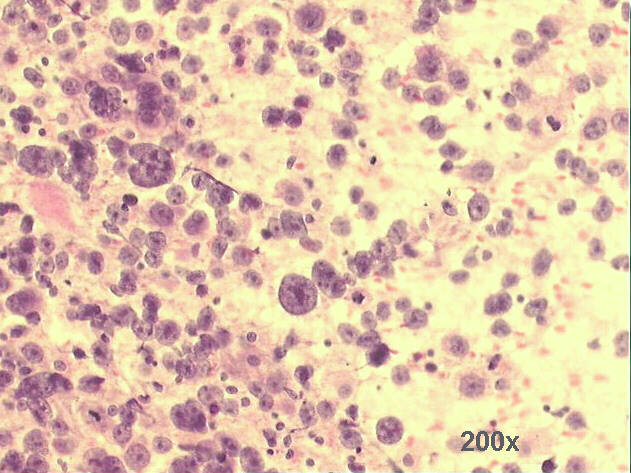
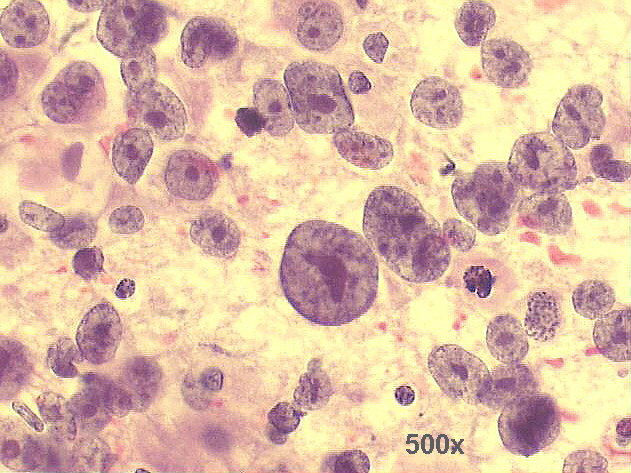
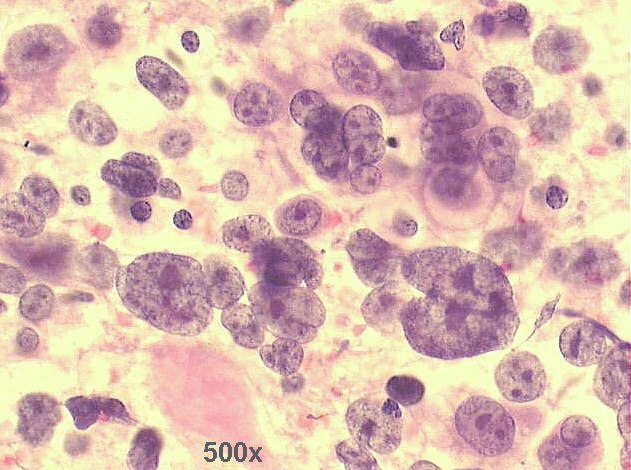
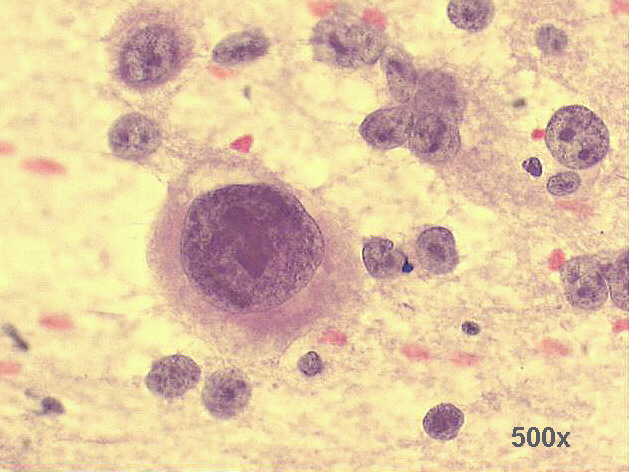
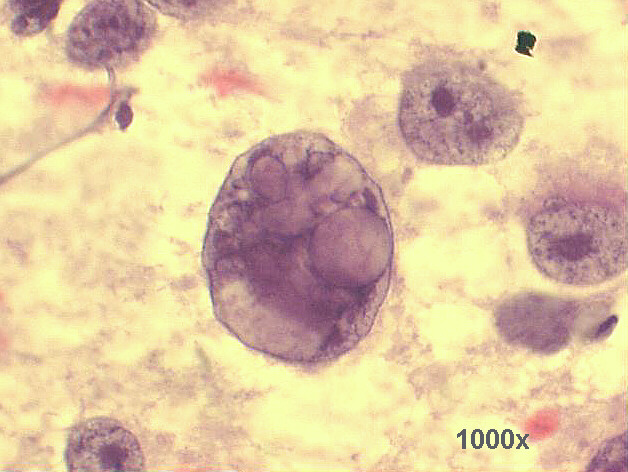
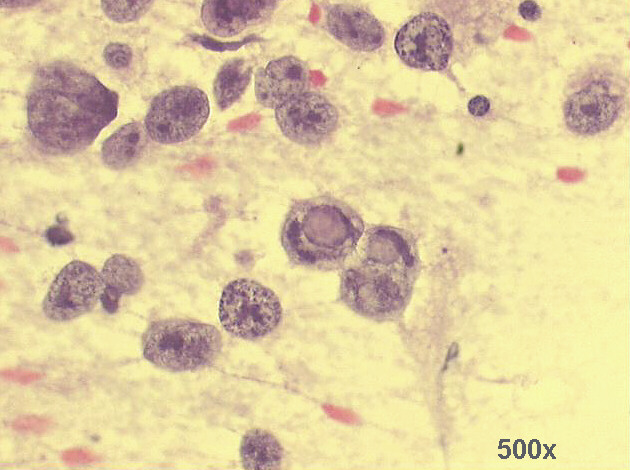
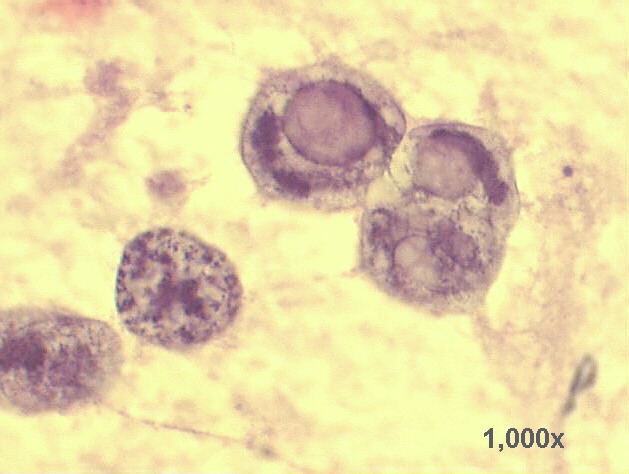
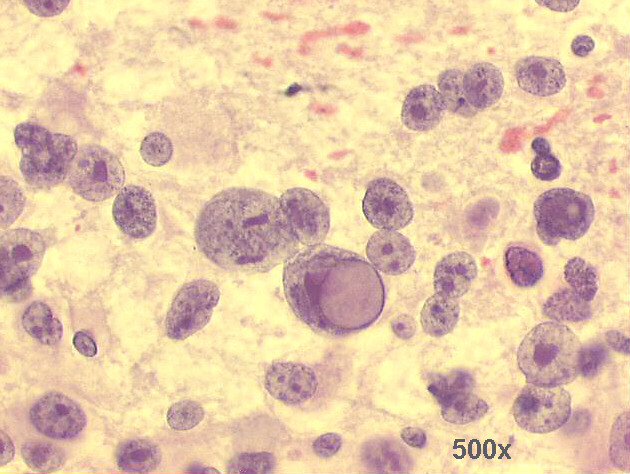
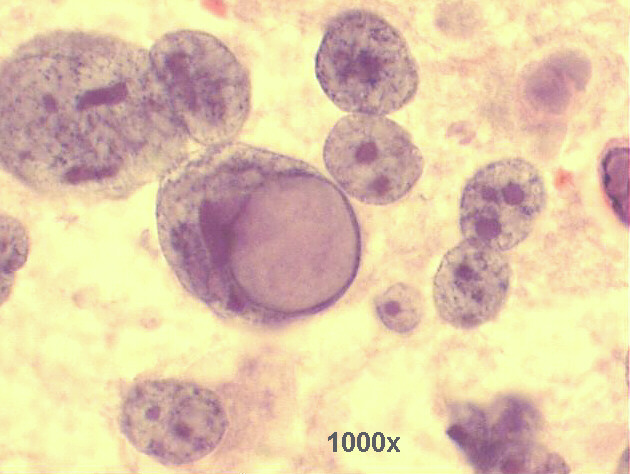
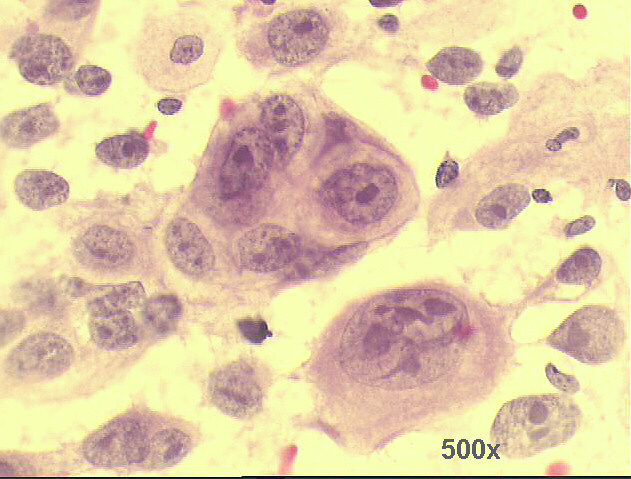
I did a Pub Med search for imprint cytology used intra-operatively: I found 971 articles, with 58 reviews, as of July 21, 2009.
Most uses: sentinel node analysis in breast, head&neck tumors, veterinary medicine, lymphoproliferative lesions, quality control of frozen sections, central nervous system neoplasms. Most studies agree that it is a quick, highly accurate method, that can have clinical importance in helping the H&E studies, directing the immunehistochemical studies, and saving time and money in the definitive diagnosis of rare or unusual cases.
In this particular case, the technique helped to make intra-operatively a firm diagnosis of epithelial malignancy, rule out amelanotic melanoma. The H&E sections showed some areas of very poorly differentiated squamous cell carcinoma, and immunehistochemical studies confirmed the epithelial nature of the lesion, and ruled out melanoma and large cell lymphomas.





















